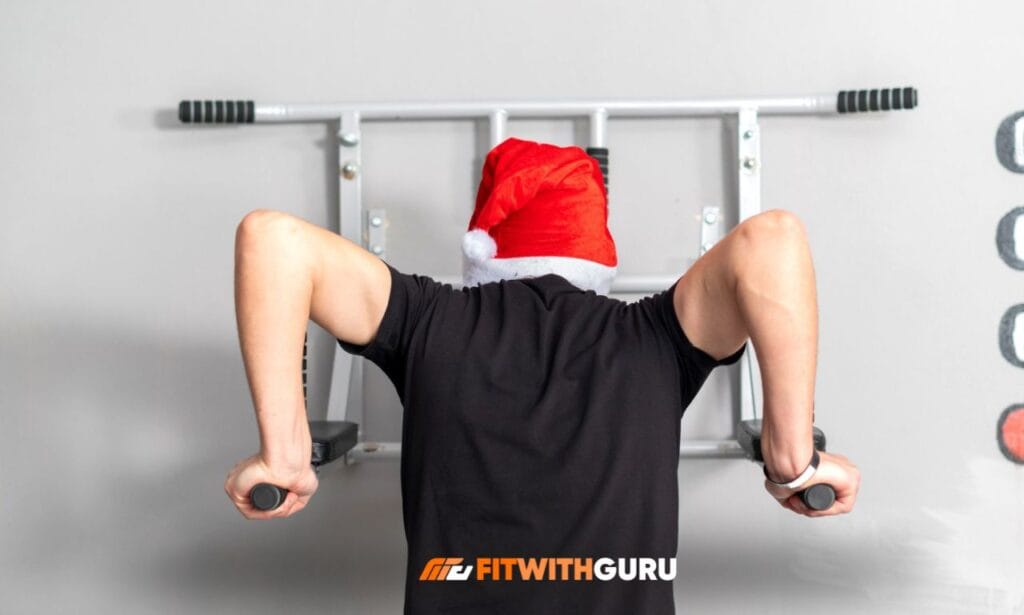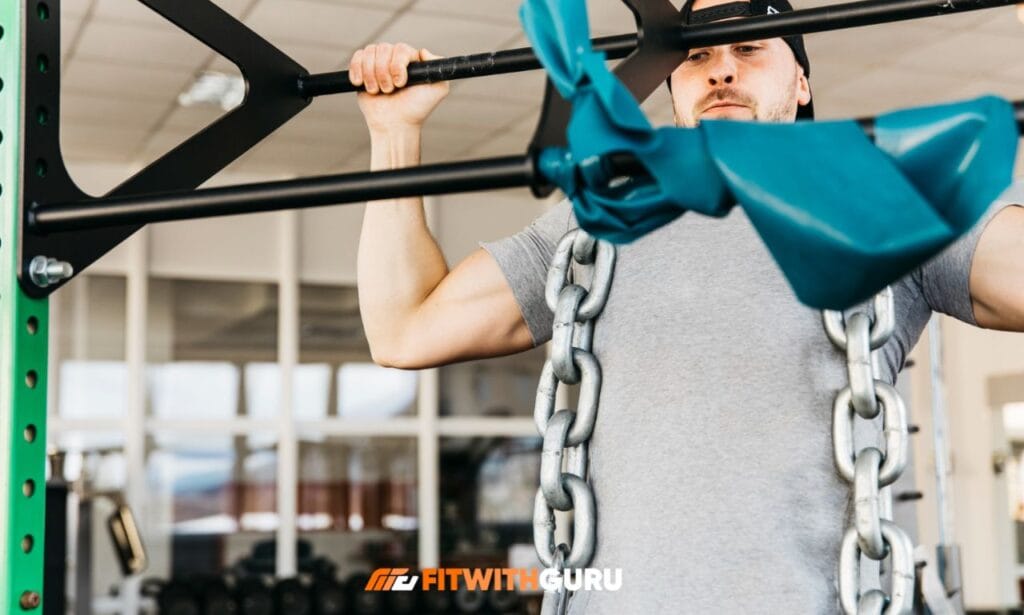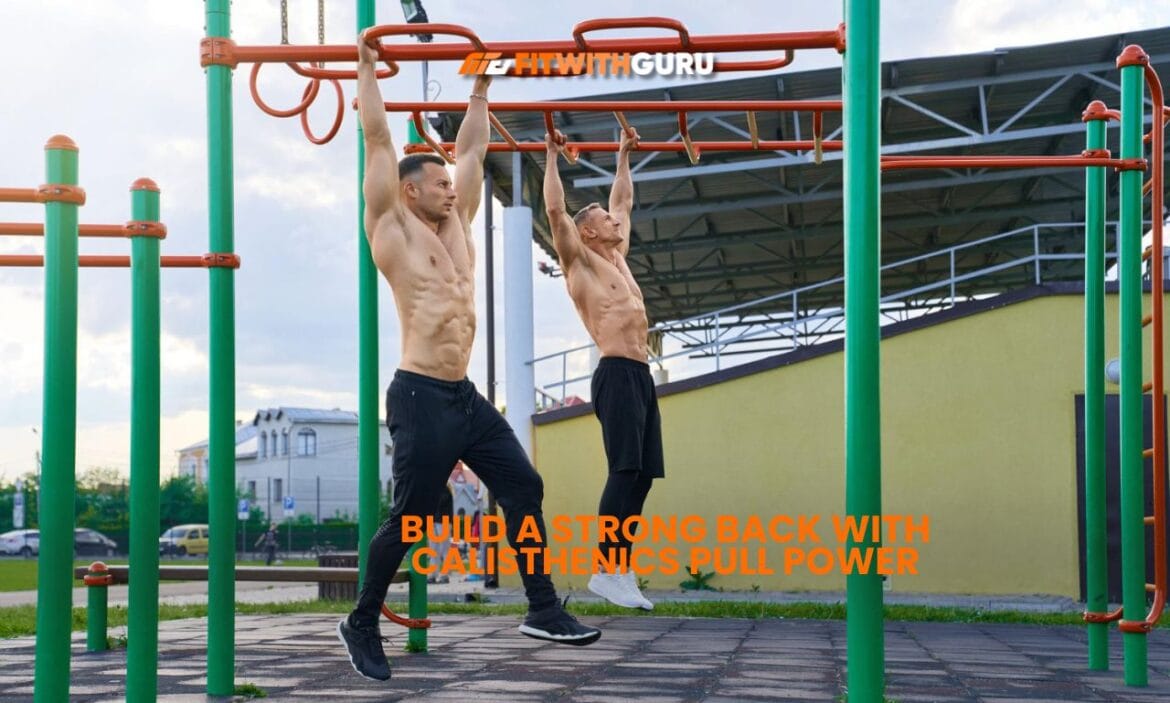Calisthenics is a fantastic way to build strength and muscle using just your body weight, and the pull workout is one of the most effective ways to target your back. If you’re looking to build a stronger, leaner back, it’s crucial to master the right exercises.
This article will cover the seven essential calisthenics pull workout exercises that will help you improve your back strength, posture, and overall fitness.
Pull exercises are not just for bodybuilders but also a key component for anyone looking to increase athletic performance or improve their functional strength. We’ll break each move down with step-by-step instructions and provide helpful tips to ensure you execute them safely and efficiently. Let’s dive into these must-try exercises!
What Are Calisthenics Pull Workouts and Why Are They Important?
Calisthenic pull workouts are bodyweight exercises that primarily target the pulling muscles of the back, arms, and shoulders.
Unlike lifting weights, these exercises rely on body weight to build strength, which can be highly effective for improving muscle endurance and functionality. Pull workouts focus on engaging the muscles responsible for pulling motions, helping you achieve a balanced and more substantial upper body.
Why are pull workouts important?
Pull exercises activate muscles such as your latissimus dorsi, biceps, and trapezius, making them crucial for functional strength. Whether performing daily activities like carrying groceries or engaging in more intense physical activities, the pulling muscles play a significant role in your overall performance. Additionally, focusing on pull exercises can help with posture, reduce the risk of injury, and enhance your overall fitness level.
What Are the Benefits of Calisthenics Pull Exercises for Your Back?
Calisthenics pull workout, when done regularly, offer a range of benefits for your back. Building a stronger back is not just about aesthetics—it’s about improving functionality and posture and preventing injuries. Here’s why calisthenics pull exercises are essential for your back health.
Stronger Back Muscles
Pull exercises specifically target the back muscles, including the lats, traps, and rhomboids. This leads to improved strength in the upper back, reducing the likelihood of slouching and contributing to better posture.
Increased Flexibility and Mobility
Unlike traditional strength training, calisthenics pull workout often require a greater range of motion. This can help increase flexibility and mobility in the shoulders and upper back, making everyday movements more manageable and less prone to injury.
Enhanced Posture and Spine Health
Pulling movements effectively counterbalance the forward-rounded posture many develop due to sitting for long periods. Regularly practicing pull exercises can help open up the chest and strengthen the muscles that support the spine, leading to better posture.
7 Essential Calisthenics Pull Workout Exercises for a Stronger Back
Now that we understand the importance of pull exercises, let’s dive into the seven essential calisthenics pull workout exercises that will transform your back strength.
1. Pull-Ups: The Ultimate Back Exercise
How to Perform:
- Start by hanging from a pull-up bar with your palms facing away from you and your hands slightly wider than shoulder-width apart.
- Pull your body up towards the bar until your chin passes over it.
- Lower your body back down in a controlled manner, keeping your core engaged.
Benefits:
Pull-ups are the quintessential calisthenics pull workout. They primarily target the latissimus dorsi, helping to build a broad and strong back. If you’re new to pull-ups, consider using resistance bands for assistance.
2. Chin-Ups: A Variation to Target the Biceps and Back
How to Perform:
- Grip the pull-up bar with your palms facing you (supine grip) and your hands shoulder-width apart.
- Pull yourself up until your chin clears the bar, keeping your elbows close to your body.
- Lower yourself back down with control.
Benefits:
Chin-ups are similar to pull-ups but with a greater emphasis on the biceps. This exercise still works the back muscles, but the supine grip allows you to recruit more bicep involvement.

3. Australian Pull-Ups: A Beginner-Friendly Alternative
How to Perform:
- Set up a low bar or a Smith machine, and place your body at a 45-degree angle.
- Grab the bar with an overhand grip and pull your chest towards the bar, squeezing your shoulder blades together.
- Lower yourself back down to the starting position.
Benefits:
This variation is more straightforward than traditional pull-ups, making it an excellent option for beginners. It targets the back muscles while providing a gentler introduction to calisthenics pull workout.
4. Inverted Rows: Building Strength with a Horizontal Pull
How to Perform:
- Lie underneath a bar, gripping it with your hands about shoulder-width apart.
- Pull your chest towards the bar, keeping your body in a straight line from head to heels.
- Lower yourself back down with control.
Benefits:
Inverted rows help to target the upper back and are excellent for improving posture. This exercise can be modified by adjusting the height of the bar to make it easier or harder.
5. Lat Pulldowns (Using Resistance Bands)
How to Perform:
- Attach a resistance band to a high point above you and grab the handles with an overhand grip.
- Kneel or sit on the floor and pull the band towards your chest, engaging your back muscles.
- Slowly release the tension and return to the starting position.
Benefits:
While not precisely a bodyweight exercise, lat pulldowns using resistance bands replicate the movement of a pull-up. They are an excellent option for those who want to increase their lat strength and improve their pulling form.

6. Dead Hangs: A Simple Yet Effective Stretch
How to Perform:
- Hang from a pull-up bar with both hands, letting your body hang freely.
- Engage your shoulders slightly to avoid straining your arms.
- Hold for as long as possible before gently lowering your feet.
Benefits:
Dead hangs help to improve grip strength, decompress the spine, and stretch the lats. This exercise is an excellent complement to other pull exercises as it aids mobility and flexibility.
7. Towel Pull-Ups: An Advanced Grip Challenge
How to Perform:
- Drape a towel over a pull-up bar and grip the ends with both hands.
- Perform a pull-up as usual, focusing on squeezing the towel to engage your back and forearm muscles.
Benefits:
Towel pull-ups are excellent for increasing grip strength and upper back endurance. They uniquely challenge your pulling power, helping to break through plateaus.
How Can You Progress with Calisthenics Pull Exercises?
As with any workout routine, progression is key to building strength and muscle. Here are some ways to make your calisthenics pull workout more challenging:
Increase Repetitions and Sets
The easiest way to progress is by increasing the number of repetitions or sets for each exercise. This will help build muscular endurance and strength over time.
Add Variations
Once you master an essential exercise like a pull-up, try variations such as wide-grip pull-ups or muscle-ups to target different muscle groups and increase difficulty.
Use Weighted Pulls
For more advanced practitioners, adding weight using a weight belt or vest can help build additional strength and muscle mass in the back.

FAQs
1. What muscles do calisthenic pull workouts target?
Calisthenics pull workouts primarily target the back muscles, including the lats, traps, and rhomboids. They also engage the biceps, forearms, and shoulders, making them an entire upper-body exercise.
2. How often should I do a calisthenics pull workout?
Aim to perform pull workouts 2-3 times per week for optimal results. For the best progress, give your muscles time to recover between sessions.
3. Are calisthenics pull exercises suitable for beginners?
Yes, calisthenics pull exercises can be modified for beginners. Variations like Australian and assisted pull-ups using resistance bands are excellent starting points.
Conclusion
Incorporating a calisthenics pull workout into your routine is an excellent way to build a stronger back and improve overall upper-body strength. Whether you’re a beginner or an experienced athlete, these seven essential exercises will help you develop the muscles needed for better posture, enhanced performance, and a reduced risk of injury.
Remember to progress gradually and ensure proper form to reap the maximum benefits of these movements. Start including these calisthenics pull workout today, and watch your back strength grow!

